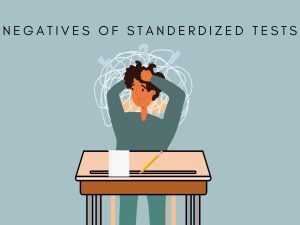Elementary school students trade virtual classroom for in-person instruction
Three elementary school students play outside for recess while social distancing.
November 16, 2020
On Sept. 29, the Wake County Board of Education voted that students Pre-K through third grade return to the classroom on a rotating basis beginning Oct. 26. Starting today, these students will attend classes daily. Fourth and fifth grades join them in rotation. As Wake County moves toward in-person learning, students and teachers must navigate a new normal.
Wakefield Elementary School principal Cynthia Keech has worked diligently as COVID Coordinator. She believes that the Board functions with her community’s safety in mind.
“We don’t always know everything that goes into making a decision [such as this one],” Keech said. “We have to trust that they’re utilizing their best metrics as well as the best advice from our leadership.”
Keech and her team implemented an assortment of safety and health measures in preparation for students’ arrival. They divided students into different tracks. Signage, social distancing measures, capacity requirements, scheduling, staff member accommodations, and training with equipment (thermometers, gloves, mask-wearing, etc.) all became major responsibilities. Keech held parent-teacher conferences and open houses closer to Plan B’s introduction.
“I developed what I call a ‘War Room’,” said Keech, lifting her computer to face a filled whiteboard. “We had to have several plans in place. It’s all sectioned off for different categories.”
Besides the sheer amount of time that Plan B preparations demanded, the new learning structure has posed some challenges for educators.
“[We adults are] a little bit set in our ways,” Keech said. “It’s hard to let go of what is always considered best practice.”
Despite the difficulties of pandemic-era instruction, teachers and students seem to agree on its advantages over remote learning.
“Second graders need guidance while they’re learning new skills,” said Christine Merrin, a teacher at Wakefield Elementary School. “It’s difficult to meet each student’s needs through a screen, especially when they’re still learning how to navigate on the computer.”
Both Merrin and Keech recognize the flexibility and resilience of elementary school students. Merrin has not experienced any issues with children following safety precautions. More than anything, she notices her students’ excitement to be back — a sentiment reflected by Mason and Garrett Joyner, fifth and first graders, respectively.
“I like being able to see my teacher in person and play with my friends,” G. Joyner said.
Before he experiences in-person learning with his classmates again, M. Joyner takes his virtual classes at the elementary school while his mom works. M. Joyner feels ready to return to school and acknowledges its benefits.
“There are less distractions [at school] and teachers are able to tell if kids are participating or not,” M. Joyner said. “Garrett [used to] play in the background when I was in calls.”
Senior Madeline Caulway believes her fifth-grade brother, Jack, will enjoy a fuller learning experience away from devices.
“Jack can’t wait to return to school. He misses seeing all of his friends and getting the actual learning experience by sitting in the classroom,” Caulway said. “He has been able to adjust to online school easily, but he has been spending more time on video games than he usually would during the school week. Taking a break from devices will be refreshing for him.”
What can families do to help with this transition? One parent was able to manufacture one hundred desk shields made of plexiglass. They allow kids to take off masks during lunch without losing protection. But Principal Keech conveys how another, more intangible method of assistance can be just as impactful.
“I think it’s important for [families] to understand that the people in the schools also have families,” Keech said. “Think about the big picture and be supportive of each other. We know that it’s not easy, but we just need to work together.”









